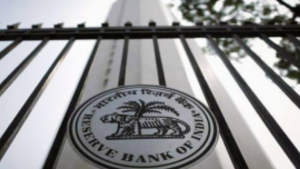
Taking into account the outlook for inflation and growth, as well as the uncertainties associated with omicron and global spillovers, the Reserve Bank of India’s Monetary Policy Committee unanimously decided on Thursday to maintain the status quo on benchmark rates and maintain the accommodative stance. The following are the viewpoints of select BFSI sector representatives on the RBI’s policy decision.
Upasna Bhardwaj, Senior Economist, Kotak Mahindra Bank: The policy has been far more dovish than expectations, decoupling completely from the global financial tightening. Our estimates are 50bps higher than RBI’s FY23 inflation estimates. We expect the RBI to play catch-up in the April policy. RBI may want to use overnight VRRRs to bring the overnight rates closer to the repo rate even before the fixed reverse repo hike.
Nitin Shanbhag, Executive Group Vice President, Investment Products, Motilal Oswal Private Wealth: Policy rates remaining unchanged indicates that RBI is more focused on domestic macro variables rather than tracking global central bank actions. RBI seems far more calibrated in its approach given its projection of domestic CPI peaking in Q4FY22 and moderating in FY23. We maintain that the yield curve is likely to flatten going forward. Hence, for core fixed income allocation, a barbell approach i.e., having a core allocation to high-quality accrual oriented funds with short maturities (3-5 years), complemented by 20-30% allocation towards long maturity and high-quality roll down strategies, would remain the preferred strategy.
Anil Gupta, Vice President & Co-Group Head, ICRA: The enhancement of Voluntary Retention Route (VRR) limits for investments by foreign portfolio investors by Rs1 trillion to Rs2.5 trillion is a positive move, as the prevailing VRR limits are nearly exhausted, even as the overall FPI investments in government securities and corporate bonds have been on a declining trend over the past few years. While this enhancement in limits may pull in some additional funds amidst the rise in planned government borrowings, overall FPIs flows are likely to remain muted in the near term, given the concerns on India’s fiscal deficit as well as rising rates in developed economies.
Churchil Bhatt, EVP Debt Fund Manager, Kotak Mahindra Life Insurance Company: Yet again, this time to the market’s surprise, the MPC has kept the key policy rates unchanged. Going forward, the RBI may conduct longer tenor liquidity operations in addition to ongoing 14 Day Tenor operations, which remain the primary liquidity management tool. The dovishness of the policy has taken bond markets by surprise and hints at a delayed onset of gradual monetary tightening compared to market expectations. While policy normalization remains inevitable, the implied promise of a calibrated and guided approach by RBI is likely to ensure an orderly evolution of the yield curve despite a large government borrowing program.
IT Outsourcing, IT Governance, Risk, Controls: Extensive outsourcing of critical IT services, leveraging of technology by the regulated entities of RBI and increasing use of digital channels by customers expose the regulated entities to significant financial, operational and reputational risks. A need was, therefore, felt to review and consolidate the extant guidelines. Accordingly, two draft directions will be issued for comments of stakeholders and members of the public: (i) Reserve Bank of India (IT Outsourcing) Directions, 2022; and (ii) Reserve Bank of India (Information Technology Governance, Risk, Controls and Assurance Practices) Directions, 2022.
AK Goel, Chairman, IBA: RBI has once again focused on giving a push for growth in this policy. On the liquidity management front, an extension of term liquidity of Rs 500 billion to emergency health services and on tap liquidity window for contact intensive sectors to the tune of Rs 150 billion up to June 30, 2022, are expected to provide a focused flow of resources to these needy sectors. Other liquidity management measures like the conduct of variable rate repo operations of varying tenors as and when required, variable rate repo and variable rate reverse repo auctions of 14 days tenor being the main liquidity management tool are expected to provide sufficient flexibility to RBI.
Enhancement in the limit of Voluntary Retention Route (VRR) for Foreign Portfolio Investors (FPIs) from Rs 1.5 crore to Rs 2.5 crore would help in retaining additional resources of FPIs for long-term investments.
On the regulatory front, the enhanced limit of NACH mandate from Rs 10 million to Rs 30 million under TReDS will help to increase the fund flow to the MSME sector. Enhancing the limit of e-RUPI vouchers using UPI from Rs 10, 000 to Rs 1 lakh is another positive for the public. In short, RBI has delivered a pro-growth policy in line with the government’s overall objectives.







